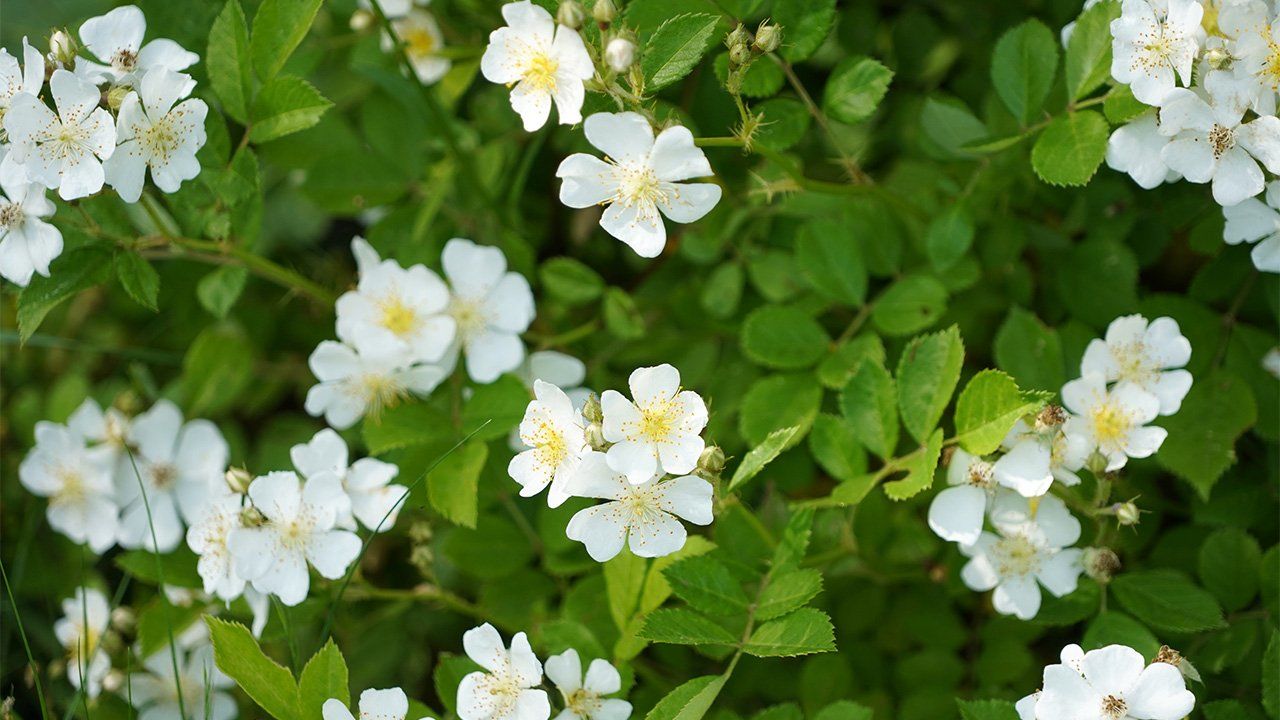
A Journey Through Japanese Haiku
A Path to Childhood
Culture Environment Lifestyle- English
- 日本語
- 简体字
- 繁體字
- Français
- Español
- العربية
- Русский
花茨故郷の路に似たるかな 蕪村
Hana ibara / kokyō no michi ni / nitaru kana
Wild roses—
like the path in
my hometown(Poem by Buson, written in 1774.)
Everyone has memories of the place where they spent their childhood, fondly remembered scenes that linger in the mind. Buson’s memories were associated with wild roses. The haiku above conveys his thoughts, “This path with wild roses blooming looks a lot like one in the village where I played as a child.” Japan’s noibara bloom from around May with fragrant white flowers. As well as their shape and color, the aroma of the wild roses sparked Buson’s nostalgia.
Buson was born in the village of Kema on the outskirts of Osaka. In a letter to one of his followers, he writes that when young he often played with his friends on the banks of the Yodo River. Perhaps the wildflowers bloomed on the path leading there.
In a preface to the haiku, Buson writes of climbing an “eastern hill,” using the word tōkō (東皐), a phrase that appears in a poem by the ancient Chinese writer Tao Yuanming on quitting his government job and returning to his hometown. In this, he climbs a low hill toward the east of the village and is filled with the joy of return. Buson, however, left Kema while still young and never returned, not even stopping there when travelling from Kyoto to Osaka. Perhaps there was a reason that he could not visit even though he wanted to.
Even if, like Tao, he climbed up the hill via the path that looked so much like the one from his memories, he could not see Kema. The haiku conveys this sense of homesickness.
(Originally published in Japanese. Banner photo © Pixta.)